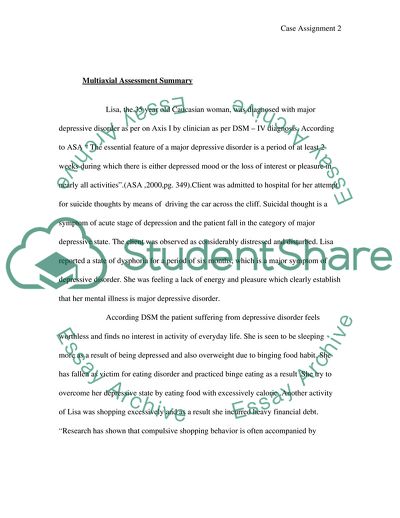Multiaxial Diagnosis of Lisa Case Study Example | Topics and Well Written Essays - 1000 words. https://studentshare.org/medical-science/1746108-multiaxial-diagnosis-the-case-of-lisa
Multiaxial Diagnosis of Lisa Case Study Example | Topics and Well Written Essays - 1000 Words. https://studentshare.org/medical-science/1746108-multiaxial-diagnosis-the-case-of-lisa.


